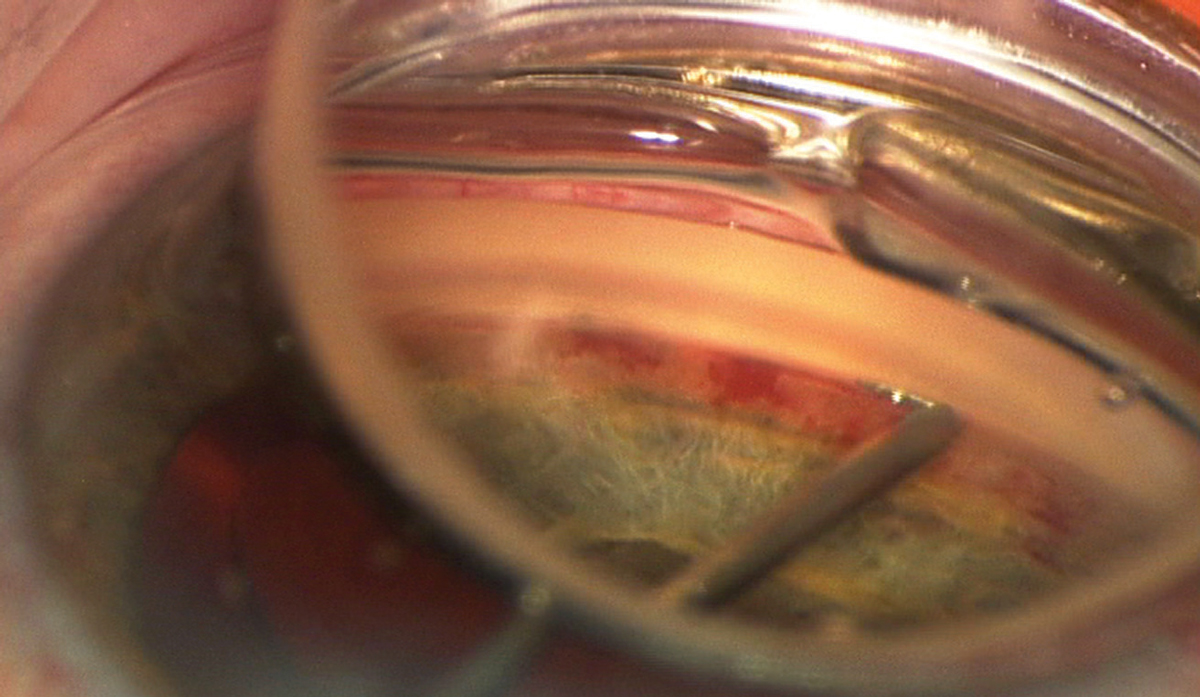 |
|
The iStent inject during phacoemulsification in patients with mild to moderate POAG did not produce any device-related complications or endothelial cell density safety concerns. Photo: Joseph W. Sowka, OD. Click image to enlarge. |
The preservation of endothelial cell density (ECD) is important for all patients but especially those with with chronic eye diseases or ocular comorbidities, such as primary open-angle glaucoma (POAG), that require surgical treatment. In this study, researchers investigated five-year postoperative safety data of the iStent inject, including overall stability, ECD and endothelial cell loss (ECL) in POAG patients.
There were a total of 227 participants, 178 in the iStent inject and phacoemulsification group and 49 in the phacoemulsification-alone control group. No secondary surgical interventions were required to modify device position, address corneal endothelial touch by device or treat corneal edema leading to decreased best spectacle-corrected visual acuity.
No significant differences in ECD or ECL endpoints between the iStent inject were found in either group. The largest reduction in ECD occurred between screening and three months in both the iStent inject group and the control group, most likely representing initial surgical trauma, and there was only minimal ECL after.
“Based on the annualized rate of ECD change, we estimated no statistically significant differences between groups between three and 60 months postoperative; hence, the iStent inject had no additional impact on ECL,” the authors wrote in their paper. “Overall, these results suggest that implantation of the iStent inject does not lead to any additional adverse effect on ECD or ECL vs. phacoemulsification alone over the long-term.”
Although there were slight differences in baseline visual fields and visual acuity, there were no major differences between the groups in demographics, ECD or change in ECD at screening or at 24 months that would suggest a risk of selection bias impacting study outcomes.
“Most patients with mild to moderate POAG and age-related cataract are expected to have a longer average life expectancy than the five-year follow-up period of this study,” the authors concluded. “A longer follow-up period could capture any potential longer-term effects of iStent inject implantation on ECL, although this is unlikely given the stability of ECL beyond the six-month postoperative period.”
Ahmed IIK, Sheybani A, De Francesco T, et al. Long-term endothelial safety profile with iStent inject in patients with open-angle glaucoma. February 17, 2023. [Epub ahead of print]. |


